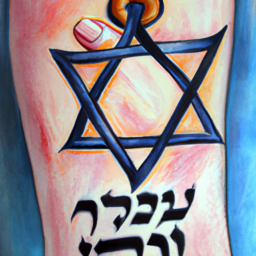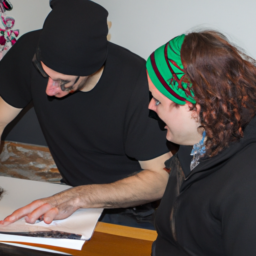“How Much Does a Hebrew Tattoo Cost in 2024? A Comprehensive Guide”
Hebrew Tattoos:
Throughout the history of mankind, tattoos have served as a significant cultural emblem. With their evocative imagery, tattoos have conveyed messages about strength, beauty, courage, and spiritual bonds, among other things. Hebrew tattoos, in particular, have long been sought after for their profound symbolism and distinctive aesthetic. Rooted in one of the world’s oldest languages, Hebrew tattoos often embody religious identities, spiritual beliefs, or historical legacies.
In the modern era, getting a tattoo involves not just cultural or personal motivations but certain financial considerations as well. This scenario holds true even for Hebrew tattoos. From the choice of design to the tattoo artist’s fee, multiple factors affect the overall cost of getting inked. This reality has led potential tattoo enthusiasts to seek guidance on understanding the cost associated with Hebrew tattoos, which involves a thorough review of various elements.
The Rise of Hebrew Tattoos in 2024:
In recent years, the popularity of Hebrew tattoos has surged exponentially. 2024 has seen a remarkable interest in these tattoos, extending far beyond the Jewish community. People ranging from celebrities to common folks are gravitating towards Hebrew tattoos. This growing popularity can be attributed to their uniqueness, the deep meaning behind the symbols, and an increasing acceptance of tattoos as a form of personal expression.
From a business journalism standpoint, the rising demand for Hebrew tattoos is certainly fascinating. Tattoo parlors are capitalizing on this trend, leading to an expanding market for Hebrew tattoos. With their potent blend of history, culture, and spirituality, Hebrew tattoos represent an intriguing niche in the vibrant world of body art.
However, it’s worth noting that as these tattoos become more mainstream, potential customers should be fully aware of the cost implications associated with them. From hiring a skilled tattoo artist adept in Hebrew scripts to post-tattoo care, there are various price tags attached to this commitment. Thus, a keen understanding of these costs is as critical as the selection of the tattoo itself.
Dissecting the Factors that Determine the Cost of Hebrew Tattoos
Tattoos, particularly Hebrew tattoos, aren’t a one-size-fits-all deal. Their price can significantly vary according to a wide array of components. One of the primary determinants of cost is the size of the tattoo. A small, simple design will undoubtedly cost less than a back-sized Hebrew scripture in detailed calligraphy.
Similar to this, the complexity of the tattoo plays a significant role in cost determination. In other words, a tattoo artist will charge more for ornate and intricate designs than for simple ones. Also, the amount of colour used will have a direct impact on the final price.
Another component that can affect the price of your Hebrew tattoo is its location on the body. Some parts are more sensitive or complex to tattoo than others, leading to increased prices. Similarly, the artist’s level of experience affects how much you pay. Highly skilled and renowned tattoo artists usually charge more due to their artistry, ability, and demand.
Global Location and its Impact on Tattoo Pricing
Baseline Regional Considerations
Geographical considerations take center stage when talking about tattoo pricing. Globally, the average cost of tattoos varies widely, influenced by factors such as local cost of living, demand for artists, and addition of business overhead expenses. In some countries, getting inked might be more affordable than in others. For instance, getting a tattoo in urban areas or large cities where the cost of living is high might result in paying more.
Regional Variance Explained
This cost disparity from region to region can be accredited to various factors. The artist’s reputation, the complexity and size of the design, and the shop’s overhead costs can all dictate the price. Notably, established artists in cosmopolitan areas tend to charge more for their services due to increased operational costs and high demand. Therefore, when considering getting a Hebrew tattoo, thorough research and consideration of these factors are indispensable for budget planning.
Through this understanding, individuals can make informed decisions about where to get their Hebrew tattoos, bearing in mind that while the cost is an important factor, quality and safety should not be compromised. While we all love a bargain, prioritizing cost over quality when it comes to tattoos might lead to regrets in the form of sub-par work or, worse, health complications. Hence, ensure to balance your budget considerations with quality and safety.
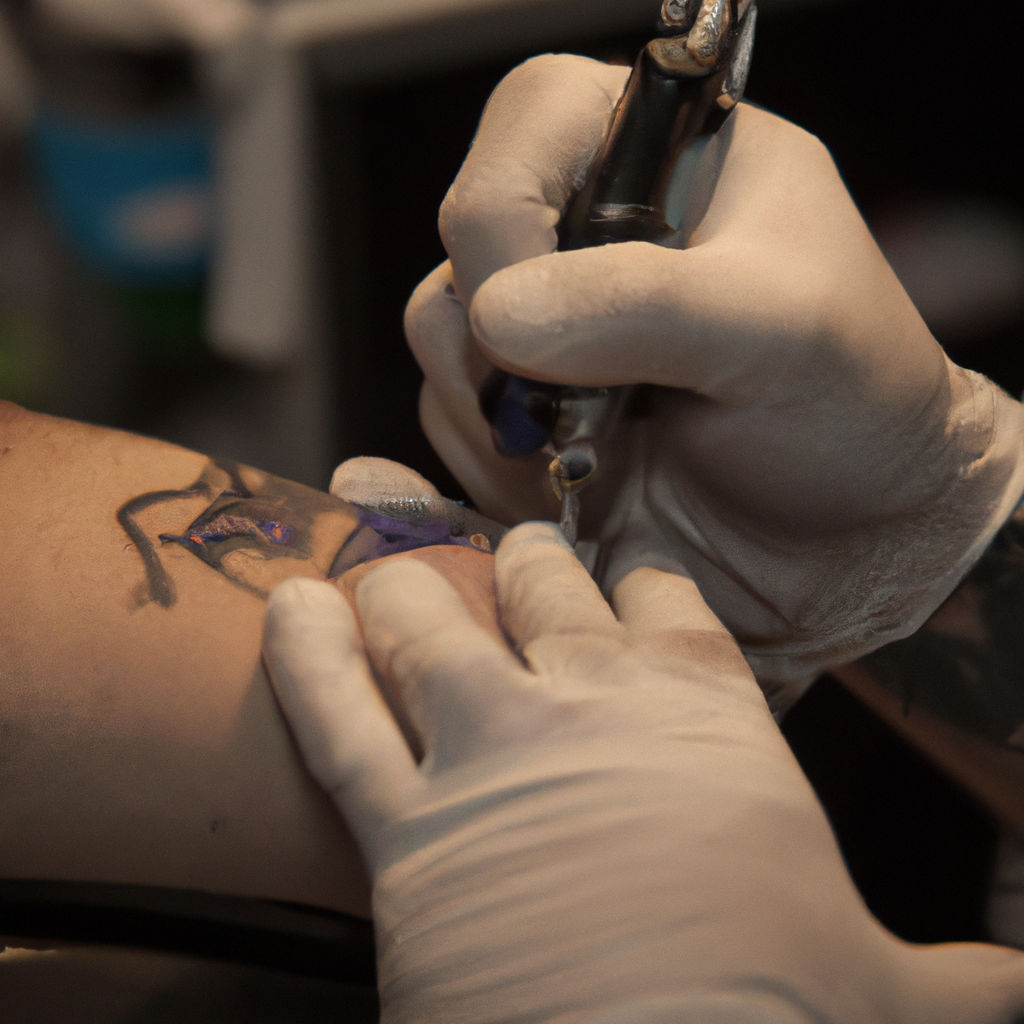
Cost of Custom Hebrew Tattoo Designs
The decision to get a tattoo, especially one that holds deep cultural and personal meaning like a Hebrew tattoo, involves several considerations – design, artist, location on the body, and undeniably, cost. When opting for a custom Hebrew tattoo design, the financial implication is often more substantial as compared to a standard design. The
cost associated with custom Hebrew tattoos
largely hinges on the intricacy of the design, time taken to craft it and tattoo artist’s expertise.
A custom design that integrates complexity with the elegance of Hebrew script may demand considerable skill and time from the tattoo artist. This directly impacts the overall cost as the artist’s time, talent, and ability to accurately capture the unique elements of a custom design are critically factored into the price.
Comparatively, standard designs are often simpler, less time-consuming, and therefore, less expensive. However, they lack the personal touch and distinctive appeal that custom designs bring.
Hourly Rates vs Flat Rates in Tattooing
The pricing structure followed by the tattoo artist or the tattoo studio too plays a substantial role in determining the cost of your Hebrew tattoo. The industry leans towards two main invoicing styles – hourly rates and flat rates.
Opting for an artist charging an hourly rate could prove more cost-effective for smaller, simpler designs. Hourly rates offer transparency as you are charged strictly for the time taken to complete your tattoo. However, larger or intricate custom Hebrew designs may stretch beyond estimated time, making hourly rates potentially more expensive.
On the other hand, a flat rate is a one-off cost for your tattoo, irrespective of the time taken to complete it. This is often preferred for complex, custom tattoos as the cost remains fixed and allows better budgeting.
In conclusion, various factors contribute to the final cost of a Hebrew tattoo. While custom designs and flat rates could hike the cost, their value lies in their ability to deliver a personalized and one-of-a-kind masterpiece inked on your skin. Visitors researching Hebrew tattoos need to weigh these factors to arrive at a well-informed, price-wise decision.
Understanding Pricing Structures in the Tattoo Industry
The cost of a Hebrew tattoo – like any tattoo – can be determined in two different ways; which can be termed as flat rates and hourly rates. The details of these two pricing structures can significantly influence the amount you’ll end up paying for your Hebrew tattoo, adding to its complexity if you’re budgeting for your first tattoo.
When you are considering getting a tattoo, one main factor to think about is whether the artist charges a flat rate or an hourly rate. Some tattoo artists prefer to work on a flat-rate basis. This means that they will set a fixed price for a specific tattoo based on its size, complexity, and other factors. This pricing model is clear-cut and provides a final dollar amount upfront, allowing customers to know what their desired tattoo will cost ahead of time.
On the other hand, an hourly rate is just as it sounds. Tattoo artists calculate the cost based on how many hours they anticipate the job will take. Artists with high demand or significant experience and expertise often opt for this pricing structure. Keep in mind that intricate or large Hebrew tattoo designs may take longer, leading to a higher price.
Hidden Costs Associated with Getting a Tattoo
While the cost of actually getting the tattoo might be the first thing on your mind, it’s important to remember that there are other
potential hidden costs
associated with getting a Hebrew tattoo. These costs may not be upfront, but they can accumulate and affect your budget.
The aftercare of your Hebrew tattoo is crucial for both the longevity of your tattoo and your health. Hence, aftercare products are a necessary expense not to be overlooked. These may include antibacterial soaps, moisturizers, and sunscreen to protect colors from fading.
Furthermore, you might require touch-ups to maintain the vibrancy and clarity of your Hebrew tattoo. Some tattoo artists offer free touch-ups within the first few months, but others may charge for this service. It’s always best to clarify this with your artist beforehand to avoid any unwelcome surprises.
Lastly, while no one gets a tattoo with the intention of removing it down the line, it’s important to consider the potential costs of tattoo removal. Removal procedures can be time-consuming, painful, and much more expensive than the tattoo itself. So, it’s essential to consider these factors when planning your budget for a Hebrew tattoo.
In conclusion, a careful examination of all these aspects, including understanding the tattoo pricing structures and acknowledging potential hidden costs, will prepare you for the full financial implications of getting your desired Hebrew tattoo. Remember, everyone’s tattoo journey is unique – plan for it wisely.
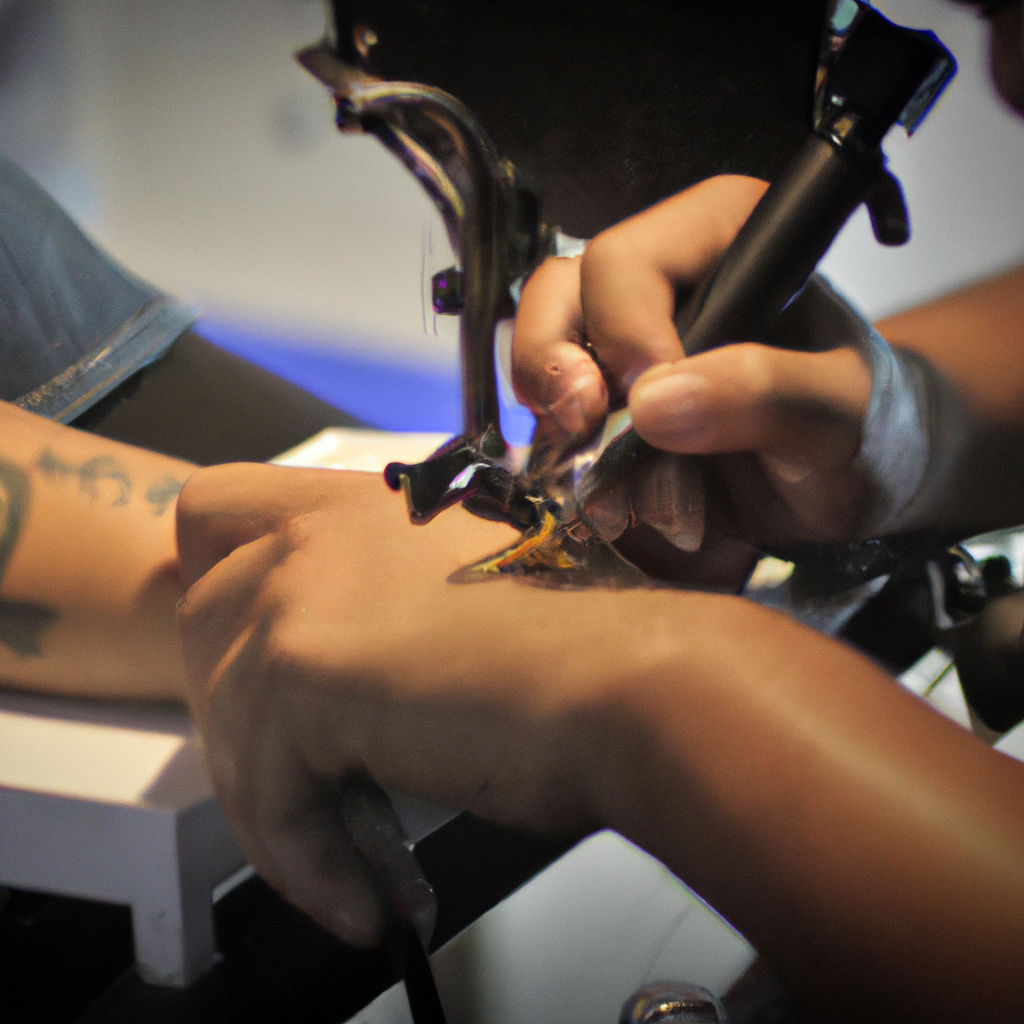
Assessing the Impact of Covid-19 on the Tattoo Industry
The global pandemic sparked by Covid-19 has had substantial implications for countless industries worldwide, with the tattoo industry being no exception. Seeing as body art involves close contact, many tattoo parlors had to halt their services during the lockdown period, causing a direct impact on industry revenue. This in turn has had a significant influence on the cost of Hebrew tattoos in 2024.
Changes in Tattoo Pricing Due to Covid-19
The economic turmoil unleashed by the pandemic made some notable adjustments in pricing strategies. Health and safety guidelines mandated additional safety gear and sanitation procedures for tattoo artists, which incurred additional costs. These increased operational expenses have been partially passed onto customers as higher tattoo prices. Therefore, securing a Hebrew tattoo in 2024 may cost significantly more than it would have prior to the pandemic.
Additionally, the economic hardship faced by many due to Covid-19 has led to reduced demand for non-essential services like tattoos. Tattoo artists needing to recoup lost income have had to price their services higher to compensate. As such, consumers considering ink work, including those eyeing Hebrew tattoo designs, should expect to pay a premium.
The impact of Covid-19 on the tattoo industry underscores an essential fact; while it’s important to budget for a tattoo, delaying a planned piece due to cost can allow more time for rigorous artist selection and safe tattooing practices, practices that are essential in the pandemic era and beyond.
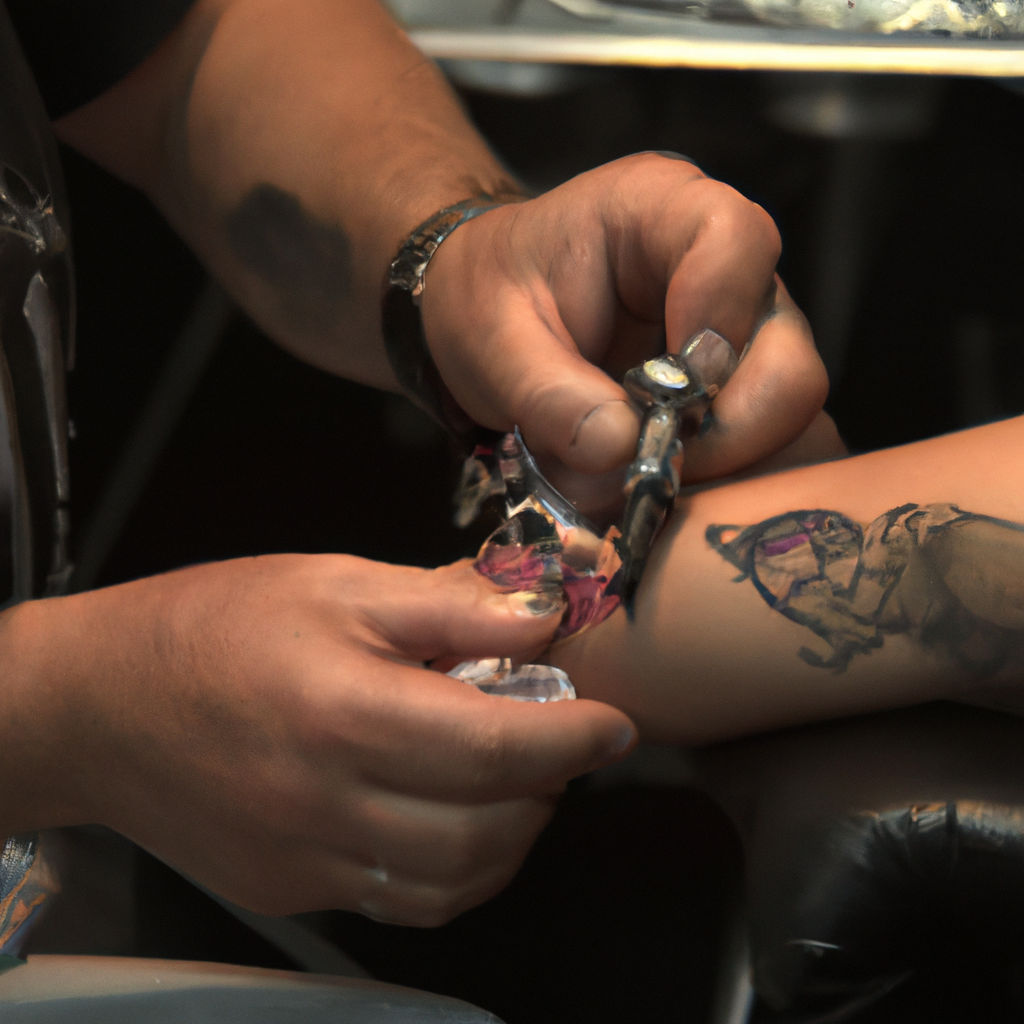
In rounding off our discourse on the cost of getting a Hebrew tattoo in the present year, 2024, it cannot be stressed enough that safety and quality should never be compromised for cheaper options. A tattoo is a lifetime commitment – an etching on your body that portrays a part of your identity. Hence, when considering getting a tattoo, especially a Hebrew one that carries deep cultural significance, it is paramount to put safety and quality first.
Navigating the path of choosing a skilled and experienced tattoo artist, ensuring the use of high-quality inks, as well as professional tattooing equipment can make a remarkable difference in both the outcome and the entire tattooing experience. Although this often means higher costs, taking a short-cut could result in adverse health effects and an unsatisfactory design, leading to regret and expensive touch-ups or removal procedures.
On the monetary aspect, the comprehensive cost of a Hebrew tattoo goes beyond merely the artistic aspect. It involves understanding and factoring in the hidden costs of tattoos, such as aftercare products, potential touch-ups, and even removal in extreme cases. Being well informed about these additional costs can help you budget effectively and prevent any unpleasant surprise expenses.
Finally, trends and changes in the tattoo industry, such as those brought on by the recent Covid-19 pandemic, can affect the cost of Hebrew tattoos. By staying up-to-date with these shifts, future tattoo enthusiasts can make informed decisions that align with their budget, safety, aesthetic criteria, and personal cultural values.
To sum up, the getting of a Hebrew tattoo is a unique journey, composed not only of the tattoo’s cost but also its personal, cultural, and historical connotations. Being aware of all these aspects, prioritizing safety and quality, and planning for potential additional costs can help ensure that this journey is as meaningful and satisfying as possible.
